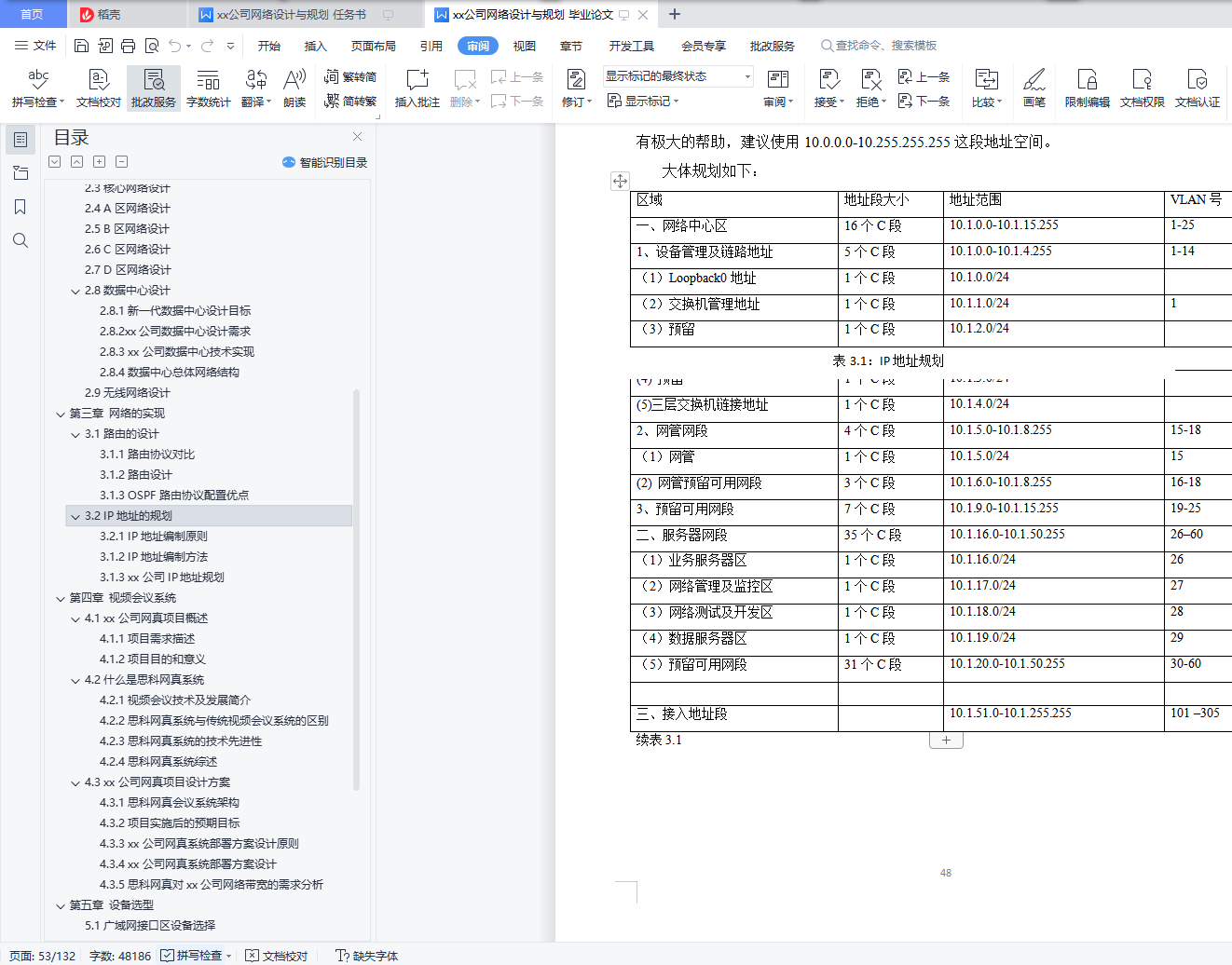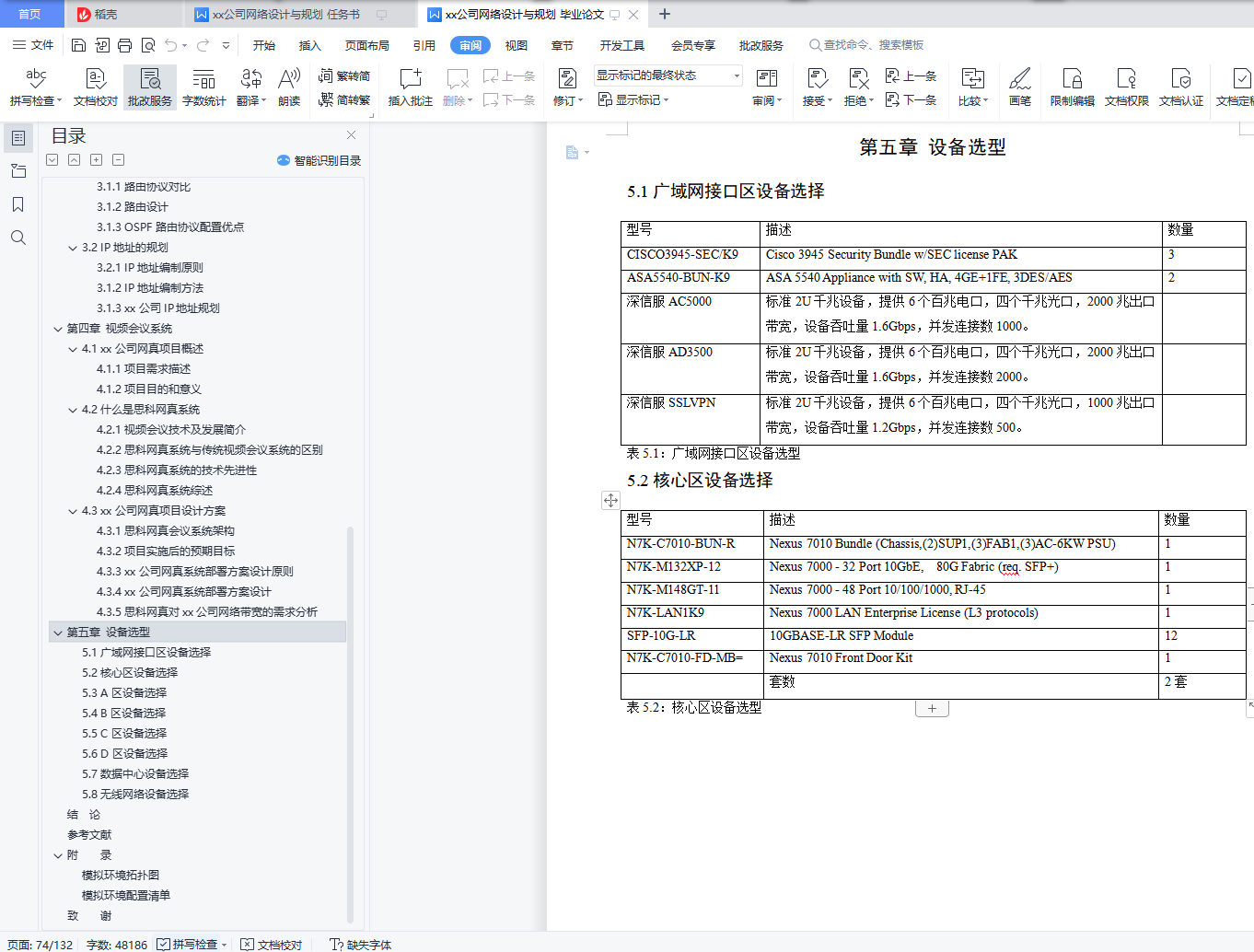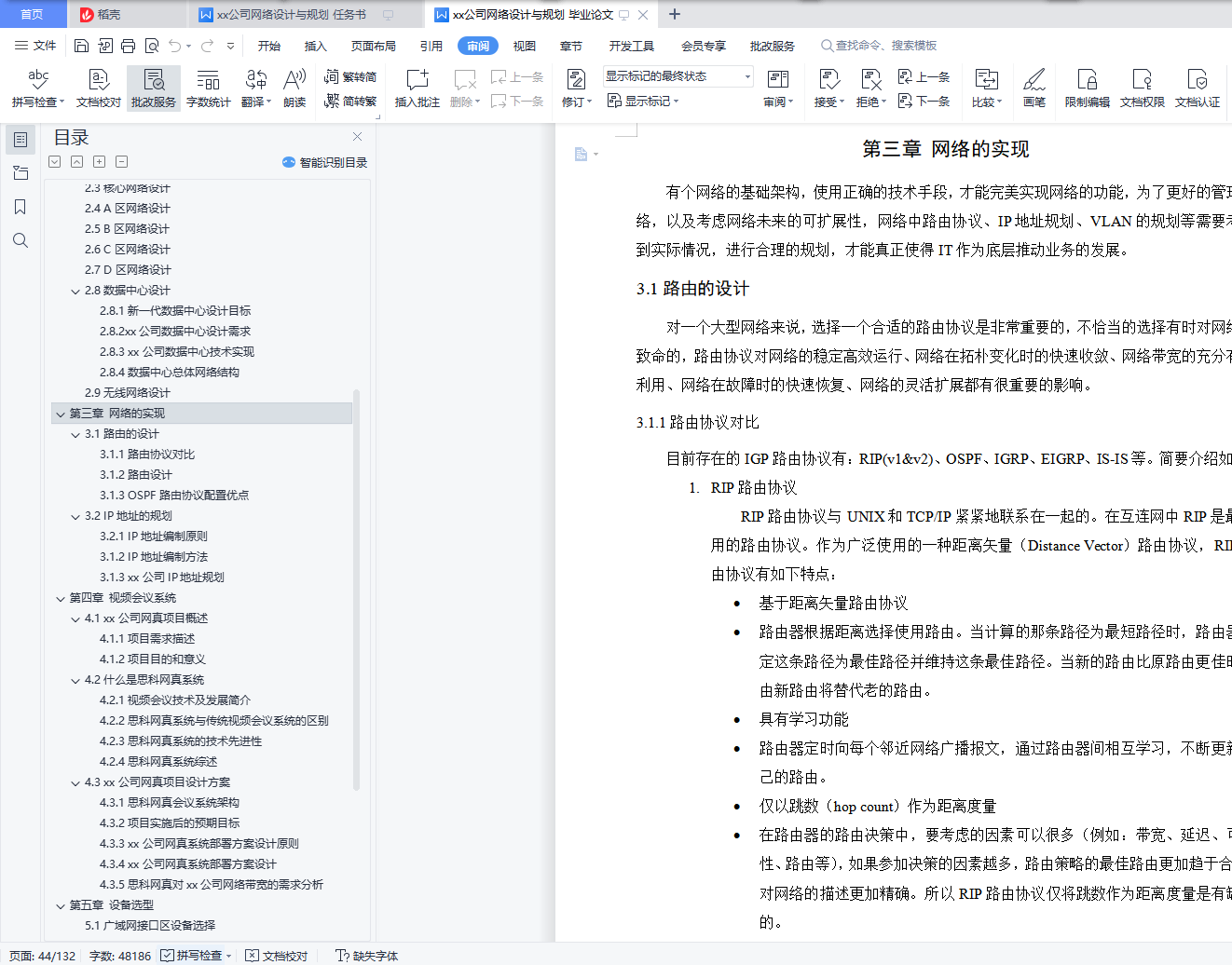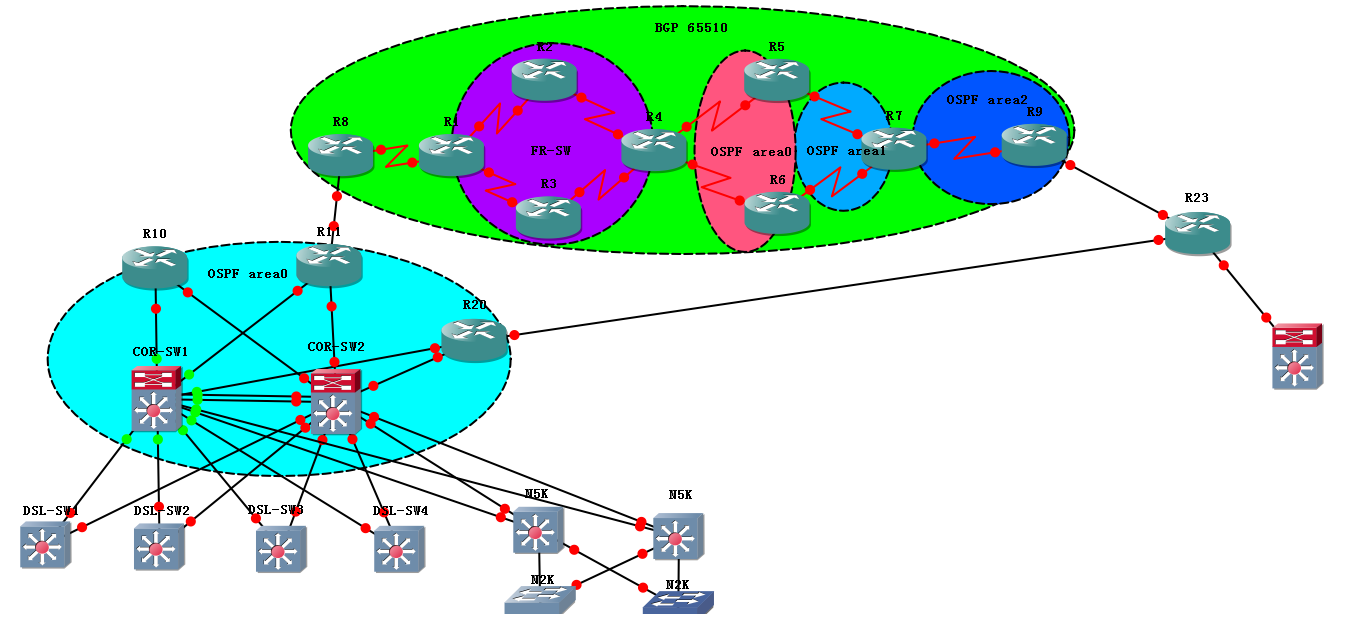摘 要
伴随着全球信息化的日益发展,计算机网络领域也在飞速的发展并日趋成熟,本次设计通过vlan技术隔离广播域,将不同部门隔离,以及使用路由协议实现整个内网能够正常通信,并且基于ACL,QOS等技术对网络流量进行分流、过滤与控制。并且对网络安全加以设置,将MAC地址与IP地址绑定,防止ARP攻击造成网络信息泄露,并且使用DHCP相关技术防止DHCP饥饿和欺骗。对出口路由器进行相关配置,实现内网能够访问因特网。最终使整个内网不仅能够正常通信,同时也可以访问因特网。同时网络中有服务器平台设计,包括DNS服务器,DHCP服务器,FTP服务器、电子邮件服务器等,满足企业最基本的需求。
本次设计主要通过各种交换协议和路由协议以及网络安全相关设计构造一个中小型企业网络,有效地实现企业内部的资源共享、信息发布、技术交流、生产组织,同时保证内网的安全性与稳定性。以Cisco Packet Tracer作为实验模拟环境对整体网络设计进行拓扑的搭建及配置;完成需求分析和设备选型、物理设计和综合布线设计、网络的逻辑设计、网络拓扑模拟调试、网络安全优化,包括:网络拓扑规划、IP划分、VLAN划分、链路聚合、OSPF路由选择、DHCP、NAT技术、VRRP、VTP技术、STP技术、QOS、ACL访问控制等解决方案。
关键词:思科三层模型;OSPF;GLBP;PVST+;VTP
Abstract
Along with the development of global information, the computer network field is also in the rapid development and increasingly mature, the design through the vlan technology isolation broadcast domain, different departments, and use the routing protocol to realize the Intranet can normal communication, and based on ACL, QOS and other technology for network traffic diversion, filtering and control.In addition, the network security is set, the MAC address and IP address binding, prevent ARP attacks caused by network information leakage, and use DHCP related technology to prevent DHCP starvation and deception.The exit router is configured to realize the Intranet access to the Internet.Eventually, the entire Intranet can not only communicate normally, but also access the Internet.At the same time, there are server platform design in the network, including DNS server, DHCP server, FTP server, email server, etc., to meet the most basic needs of enterprises.
This design mainly constructs a small and medium-sized enterprise network through various exchange protocols, routing protocol and network security related designs, effectively realizing the internal resource sharing, information release, technical exchange, production organization, while ensuring the security and stability of the Intranet.Build and configure the overall network design with Cisco Packet Tracer as the experimental simulation environment; complete demand analysis and equipment selection, physical design and integrated cabling design, network logic design, network topology simulation debugging, network security optimization, including: network topology planning, IP division, VLAN division, link aggregation, OSPF routing, DHCP, NAT technology, VRRP, VTP technology, STP technology, QOS, ACL access control and other solutions.
Key words: Cisco three-layer model;OSPF;GLBP;PVST +;VTP
目 录
摘 要 I
Abstract II
引 言 1
第一章 网络设计原则 2
1.1网络需求分析 2
1.1.1网络性能需求分析 2
1.2网络系统设计原则 3
1.2.1标准化原则 3
1.2.2选用的技术 4
1.2.3网络业务的适应性 4
1.2.4易管理和便于维护 4
1.2.5充分考虑冗余和备份 4
1.2.6网络路由协议的开放性 4
第二章 网络设计 5
2.1网络结构 5
2.2广域网接口区网络设计 6
2.2.1总部广域网接入 6
2.2.2分支机构与总部之间的访问 6
2.3核心网络设计 7
2.4 A区网络设计 8
2.5 B区网络设计 9
2.6 C区网络设计 10
2.7 D区网络设计 11
2.8数据中心设计 12
2.8.1新一代数据中心设计目标 12
2.8.2xx公司数据中心设计需求 12
2.8.3 xx公司数据中心技术实现 13
2.8.4数据中心总体网络结构 20
2.9无线网络设计 37
第三章 网络的实现 39
3.1路由的设计 39
3.1.1路由协议对比 39
3.1.2路由设计 43
3.1.3 OSPF路由协议配置优点 44
3.2 IP地址的规划 45
3.2.1 IP地址编制原则 45
3.1.2 IP地址编制方法 46
3.1.3 xx公司IP地址规划 47
第四章 视频会议系统 49
4.1 xx公司网真项目概述 49
4.1.1项目需求描述 49
4.1.2项目目的和意义 50
4.2什么是思科网真系统 50
4.2.1视频会议技术及发展简介 50
4.2.2思科网真系统与传统视频会议系统的区别 53
4.2.3思科网真系统的技术先进性 54
4.2.4思科网真系统综述 57
4.3 xx公司网真项目设计方案 59
4.3.1思科网真会议系统架构 59
4.3.2项目实施后的预期目标 60
4.3.3 xx公司网真系统部署方案设计原则 61
4.3.4 xx公司网真系统部署方案设计 61
4.3.5思科网真对xx公司网络带宽的需求分析 66
第五章 设备选型 69
5.1广域网接口区设备选择 69
5.2核心区设备选择 69
5.3 A区设备选择 70
5.4 B区设备选择 70
5.5 C区设备选择 71
5.6 D区设备选择 71
5.7数据中心设备选择 72
5.8无线网络设备选择 72
结 论 73
参考文献 74
附 录 75
模拟环境拓扑图 75
模拟环境配置清单 75
致 谢 127














